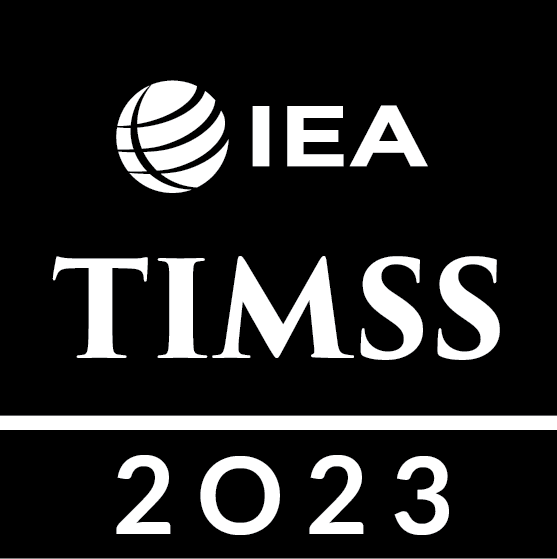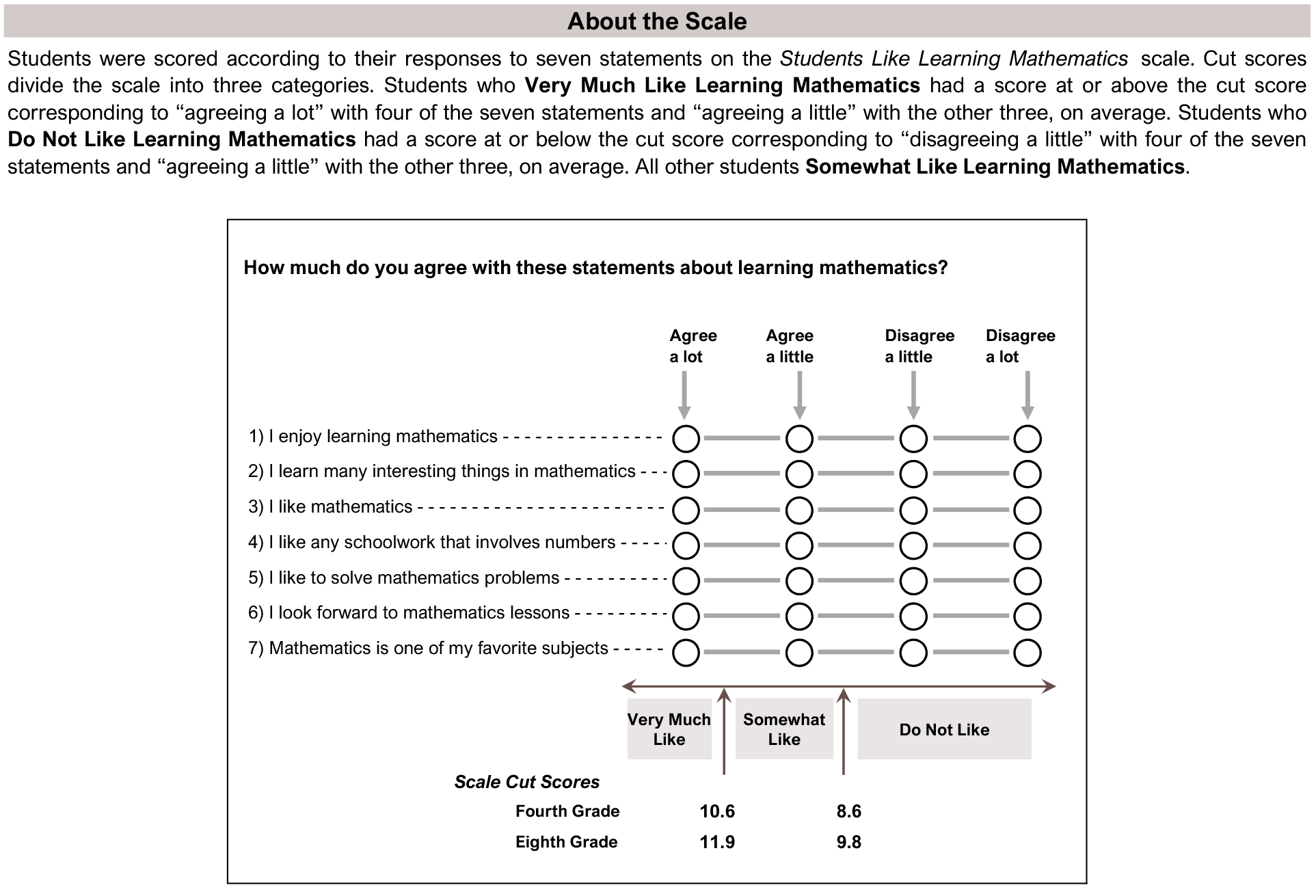Students Like Learning Mathematics
Student Experiences and Attitudes
Students Like Learning Mathematics
In both fourth and eighth grades, students who reported they enjoyed learning mathematics had substantially higher average achievement than students who reported they did not enjoy learning mathematics. The items in the TIMSS 2023 Students Like Learning Mathematics scale (Exhibit 6.2.1) asked students in both fourth and eighth grades to report the extent of their agreement with seven items about their attitudes toward studying mathematics. Based on their responses, students were assigned into one of three categories on the scale: “very much like,” “somewhat like,” or “do not like” learning mathematics.
In general, fourth-grade students were positive about learning mathematics (Exhibit 6.2.2)—44 percent, on average, reported they “very much like” learning mathematics, and another 32 percent reported that they “somewhat” like it. However, 24 percent, on average, reported that they “do not like” learning mathematics. There is variation across countries in the percentage of students who reported they “do not like” learning mathematics; nine countries have less than 10 percent of students in this category, while 19 countries have more than 30 percent. Fourth-grade students who “very much like” learning mathematics have higher average mathematics achievement than their peers who reported less enjoyment of learning the subject. The difference in average mathematics achievement between fourth-grade students who “very much like” learning mathematics and those who “do not like” learning mathematics is 32 points internationally (519 vs. 487).
Internationally, almost half (46%) of eighth-grade students reported that they “do not like” learning mathematics (Exhibit 6.2.3). On average, only 21 percent of students reported that they “very much like” learning mathematics, and the remaining 32 percent reported that they “somewhat like” learning mathematics. There are no countries where more than 60 percent of students reported that they “very much like” learning mathematics and eight countries where more than 60 percent of students reported that they “do not like” learning mathematics. The difference in average mathematics achievement between students who “very much like” learning mathematics and those who “do not like” learning mathematics is noteworthy. There is a 50-point difference in average mathematics achievement between eighth-grade students who “very much like” learning mathematics and those who “do not like” learning mathematics (508 vs. 458).
Read More
Students Like Learning Mathematics
Very Much Like
Somewhat Like
Do Not Like
This TIMSS context questionnaire scale was established in 2023 based on the combined response distribution of countries that participated in TIMSS 2023. To provide a point of reference for country comparisons, the scale centerpoint of 10 was located at the mean of the combined distribution. The units of the scale were chosen so that 2 scale score points corresponded to the standard deviation of the distribution.
( ) Standard errors appear in parentheses. Because of rounding some results may appear inconsistent.
An “r” indicates data are available for at least 70% but less than 85% of the students.
Scroll Up

